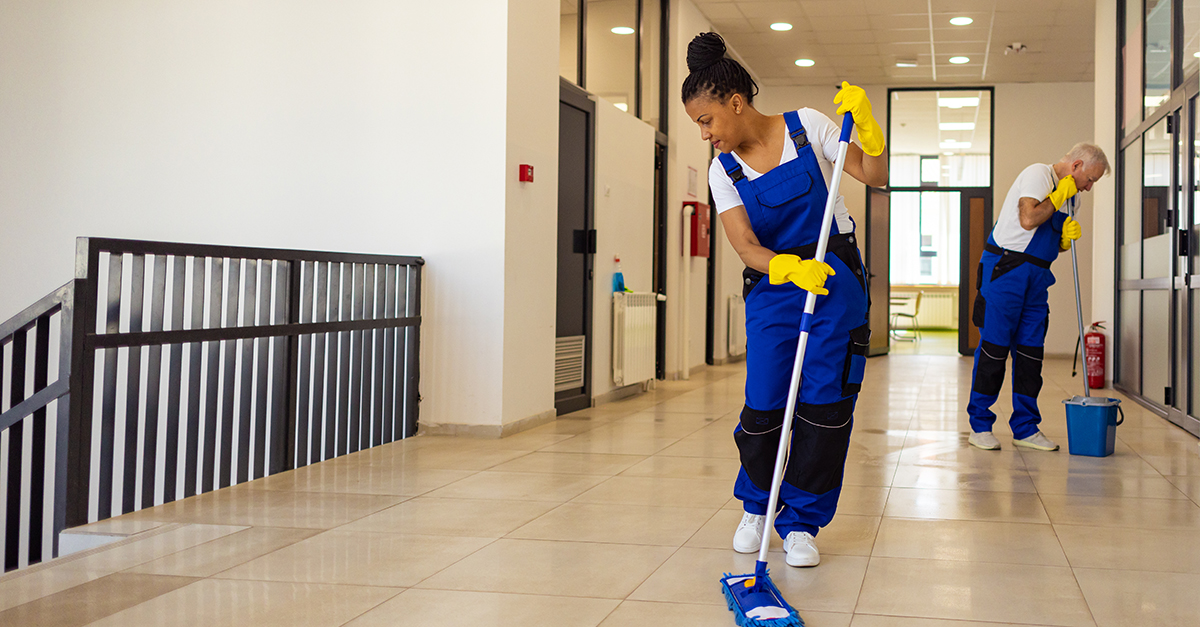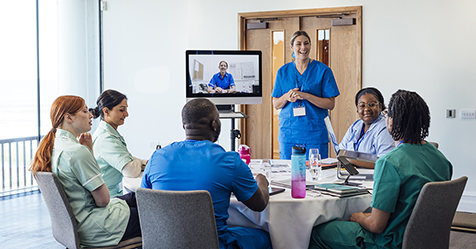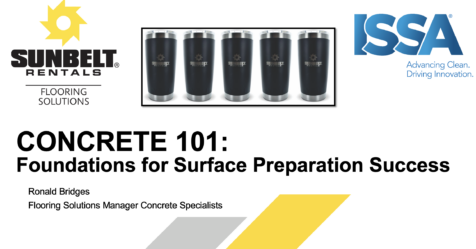Professional cleaners play an important role in the public’s health and safety. Michael A. Berry Ph.D., author of Protecting the Built Environment: Cleaning for Health, emphasized the critical role of effective cleaning in maintaining healthy indoor spaces. He stated that “effective cleaning is the process of extracting and removing unwanted matter to the optimum extent to reduce exposure to unwanted matter.”
In an article published in the Journal of Cleaning, Restoration & Inspection in 2017, titled Characteristics of High-Performance Carpet Cleaning, Berry stated his thoughts on floor cleaning: “Most people clean carpets when they look dirty. Rarely does anyone recognize that their carpet needs to be cleaned for health protection. Yet every time pollutants are extracted from the carpeting, the quality of the indoor environment is enhanced by reducing exposures.”
Overcoming obstacles to effective and safe cleaning
Berry’s book is part of the curriculum in a three-hour ISSA workshop that, to date, has trained 893 cleaning professionals. Of those workers:
- Only 13% of the workers had received any training in the past five years (from 2018- 2022). Many of the workers reported not having access to personal protective equipment (PPE) such as gloves, eye protection, or designated work clothes.
- Most workers could not explain the meaning of “handle in accordance with good industrial hygiene and safety practice,” which is often found on product safety data sheets.
- 90% could not recall one cleaning ingredient that was in a cleaning product they used at work.
Cleaning product users are looking for ways to clean well, at a reasonable price, and without harm to those who use the indoor space. However, they often need help to identify and comprehend
the varying information available for products on store shelves and purchased through distributors and wholesalers.
ISSA workshop trainers remind workers to read product labels and the manufacturers’ safety data sheets. In 2025, they strive to go one step further and encourage workers to find product
information by using available technology such as online videos, QR codes, RFID tags, smart labels, and the Digital Product Passport (DPP) required by the European Union.
Consumers also need help in choosing and using cleaning products correctly. Through its Making Safer Choices Project—in collaboration with the Penn State University College of
Medicine in Hershey, Pennsylvania, and the City University of New York CUNY School of Medicine in New York City—ISSA is conducting research to determine how people make decisions when buying and using cleaning products. The project—which is funded by a US$1.2 million grant from the U.S. Environmental Protection Agency (EPA)—will use the research results to develop community-designed tool kits and training programs in multiple languages. These kits will help people make safer choices and advocate for safer cleaning products to protect the
health of businesses, building occupants, and the environment.
The project’s 2025 goal is to work with 1,000 facilities in Pennsylvania and New York to conduct on-site product demonstrations and training courses.
Committing to safer product offerings
An adequate supply of cleaning products must be available for people to choose safer cleaning products. The Safer Choice Partner of the Year award recognizes organizations that have significantly contributed to the development and commercialization of safer chemicals and products. The award highlights ISSA and its members’ commitment to promoting sustainable and environmentally friendly cleaning practices.
By partnering with Safer Choice, ISSA and its members have demonstrated their commitment to environmental sustainability and public health. ISSA is proud to be associated with organizations recognized by the award: Bona US; Church & Dwight Co. Inc.; Earth Friendly Products; EnvirO; Holloway House Inc.; JAWS International Ltd., a Division of Canberra Corporp.; Jelmar LLC; McFadden and Associates LLC; Rust-Oleum Corp.; Seventh Generation; Solutex Inc.; Sozio Inc.; Spartan Chemical Co.; State Industrial Products; Clorox Professional Products Co.; Home Depot; The Procter & Gamble Company (P&G); Verde Clean LLC; and WAXIE Sanitary Supply (BradyPlus).
Measuring contaminants on surfaces and in the air
Once we choose effective and safe products, cleaning involves more than using these products to remove dirt. Cleaning provides essential hygiene that supports and improves health and
prevents the spread of illness.
Scientific literature offers excellent evidence that environmental contamination plays an essential role in infectious disease transmission. Research has found that germs can survive on surfaces for days, weeks, months, and even years.
We can no longer measure facility cleaning effectiveness with subjective visual inspections. Harmful contaminants and germs that can cause infections are not visible to the human eye. Our role as professionals is to make the invisible visible. But before we measure, we need to understand what the unwanted matter is and whether this matter can have a negative health impact. When we clean with the intention to remove matter that can cause illness, we are cleaning for health.
People are increasingly sharing the harmful matter they’re finding in facilities on a real-time basis through social media. They post photos and videos of dirty surfaces and indoor air quality
monitors showing high measurements of carbon dioxide, airborne particles, ozone, formaldehyde, and volatile organic compounds (VOCs).
Several countries have created laws that require businesses to measure indoor carbon dioxide (CO₂) levels and, in certain settings, display this information prominently. These laws have created
irreversible expectations that facilities screen indoor air and share the data. Notable examples include:
- Germany: Technical Rules for Workplaces (ASR A3.6) stipulate that indoor CO₂ concentrations should not exceed 1,000 parts per million (ppm) in workplaces. If levels surpass this threshold, employers must take corrective actions, which may include increasing ventilation or reducing occupancy.
- France: Regulations mandate that schools and childcare facilities monitor indoor air quality, periodically assessing it for CO₂ levels. If CO₂ concentrations exceed 1,000 ppm, facilities must implement measures to improve ventilation.
- Japan: The Building Standards Law includes provisions for indoor air quality, recommending that CO₂ concentrations in buildings should not exceed 1,000 ppm to ensure sufficient ventilation.
- United Kingdom: The UK Department for Education’s guidelines for school premises advise that CO₂ levels should not exceed 1,500 ppm during the occupied period. Similarly,
the Health and Safety Executive (HSE) recommends that indoor CO₂ concentrations in workplaces be kept below 1,000 ppm to maintain good air quality.
These regulations underscore the importance of monitoring indoor CO₂ levels to improve ventilation and occupant health. We expect to see these laws and guidelines expand in 2025.
ISSA Is Filling Knowledge Gaps
Do you want to learn more about cleaning for health? ISSA provides opportunities for cleaning professionals to learn and share knowledge and information across the industry.
- The Cleaning Industry Management Standard (CIMS) program assists cleaning companies with establishing a management system that focuses on increasing quality, efficiency, and professionalism. These improvements allow companies to provide employees and customers with a safer and healthier work environment.
- The ISSA Clean Standards establishes a framework to help schools and other facilities objectively assess the effectiveness of their cleaning processes using adenosine triphosphate (ATP) swabs and audits based on the process of “clean, measure, monitor.” The ISSA Clean Standards improve the built environment by setting levels of cleanliness that can be reasonably achieved, recommending monitoring and inspection procedures to measure the effectiveness of cleaning, and instructing workers how to use measurement and inspection results to assess and improve cleaning processes and products.
- GBAC STAR-Accredited facilities and organizations use their accreditation to support performance-based cleaning and demonstrate their commitment to health and wellness with science-based practices. GBAC STAR facilities prioritize establishing and sustaining a high-performance cleaning and maintenance program to maintain a safe and hygienic indoor environment. Employees at accredited facilities are knowledgeable and trained to uphold the highest cleaning and building maintenance standards.
- The Cleaning Management Institute (CMI) was founded in 1964 and has certified more than 300,000 individuals worldwide, furthering the education and development of cleaning and
maintenance professionals, managers, supervisors, and executives. The Accredited Auditing Professional (AAP) certification enhances knowledge and provides technical skills for quality assurance and auditing tasks. The Certified Custodial Supervisor (C.C.S.) certification provides a comprehensive set of technical and soft skills for supervisors and managers from leadership development to technical proficiency. The Certified Custodial Technician Basic and Advanced certification course provides hands-on and lecture-based education to ensure workers learn the most efficient and current best practices for daily, interim, and restorative cleaning procedures. - The ISSA Sustainability Committee was established in 2022 to develop an accessible, credible, and enduring multifaceted sustainability program for the global cleaning industry. The committee convenes volunteer leaders from throughout the cleaning industry to identify and develop resources for member needs (e.g., training and educational programs, reporting tools, government requirement explanations, product lifecycle management tips). It assists companies with making organizational improvements and responding to customers’ sustainability requests.
ISSA is leading a movement toward making safer choices for a clean, healthy, sustainable world. Visit issa.com for more information on education programs and other opportunities.




